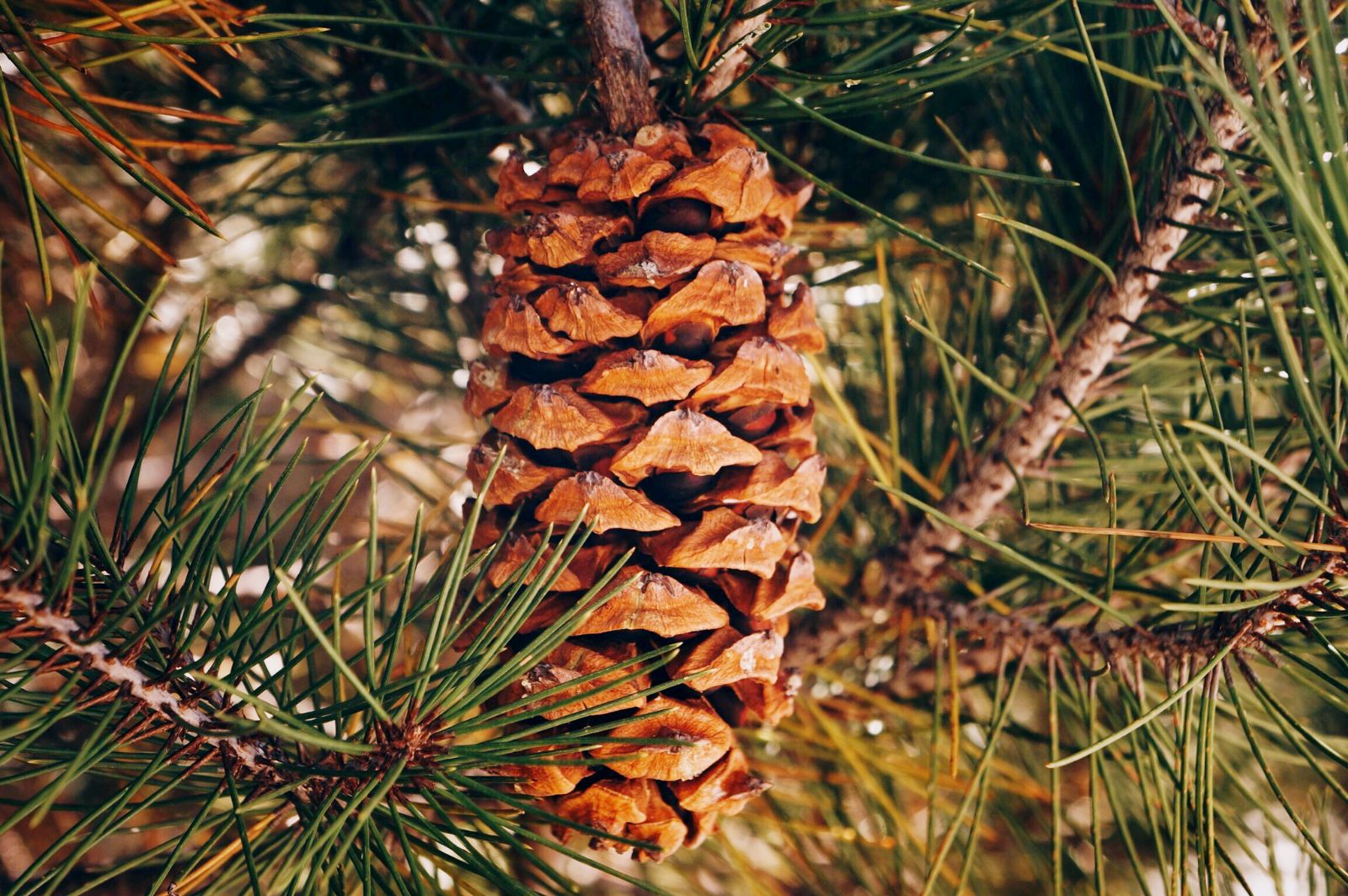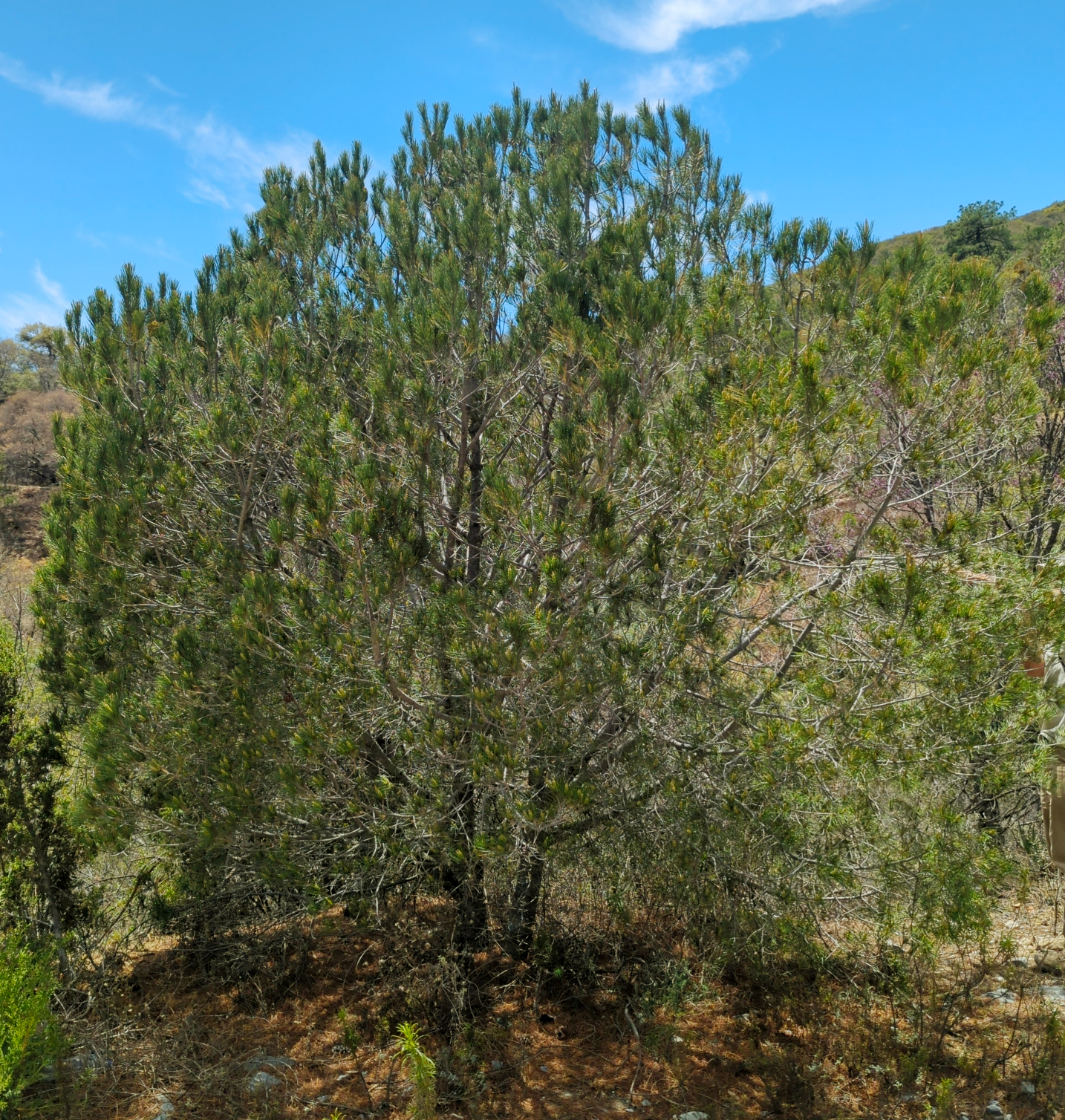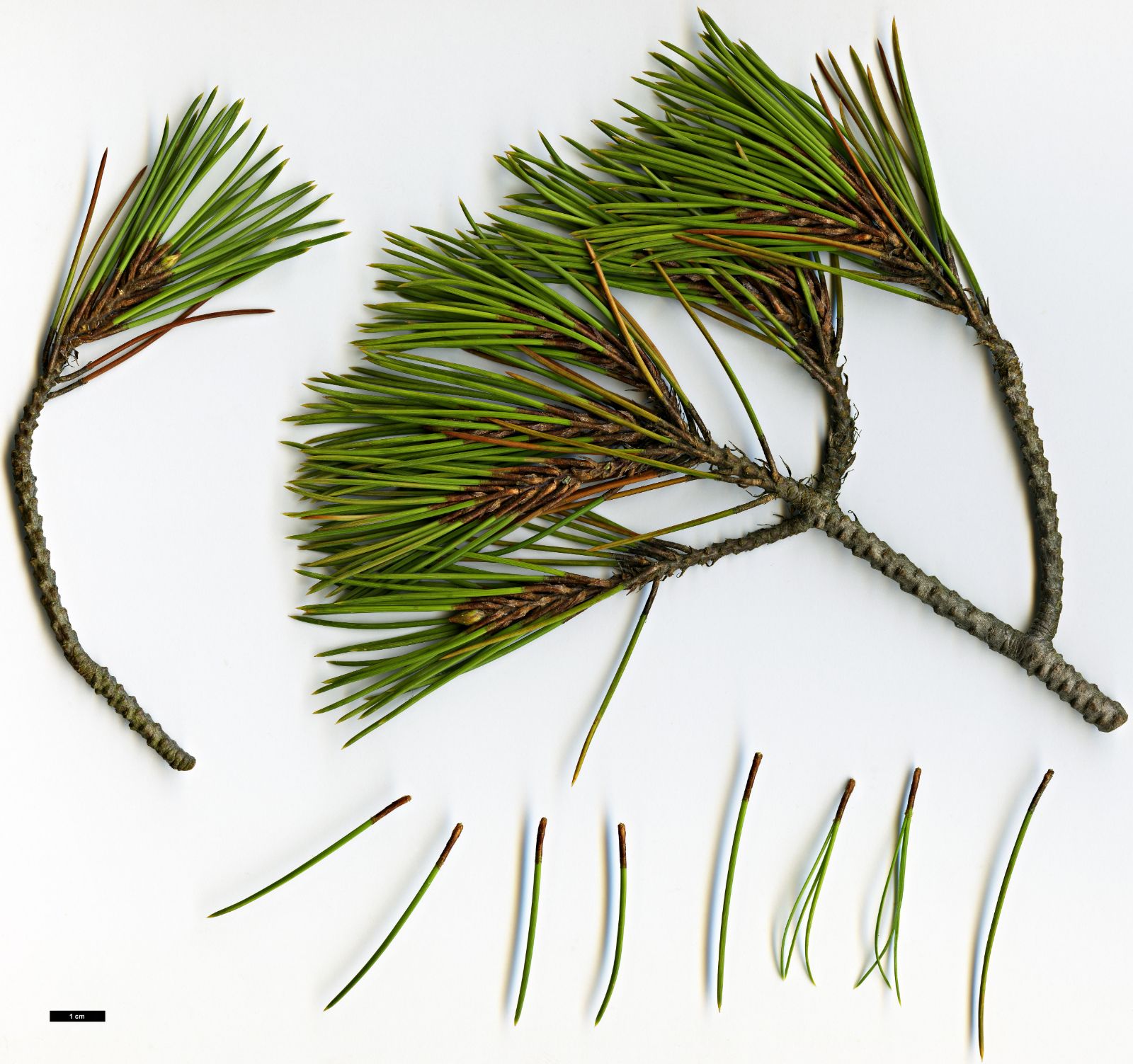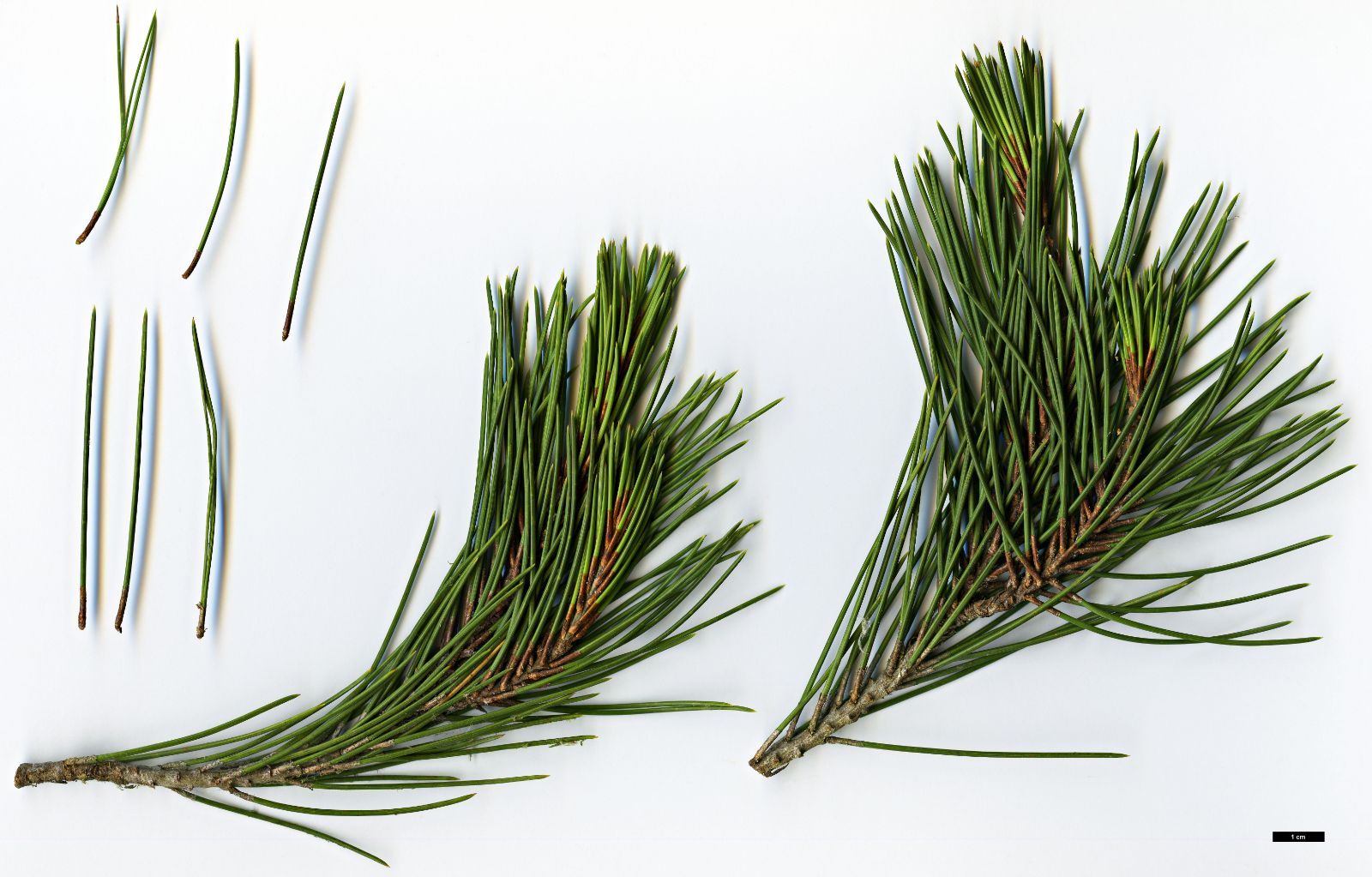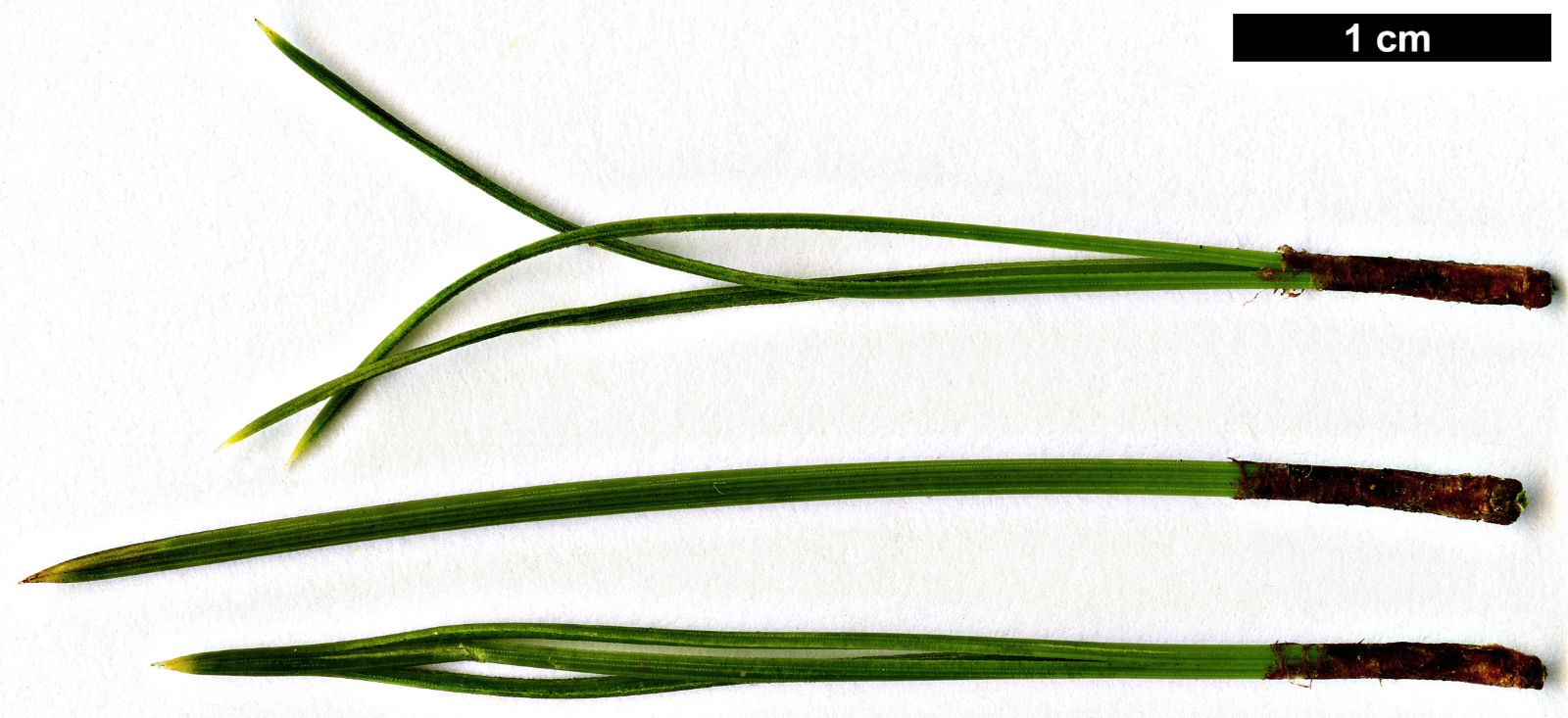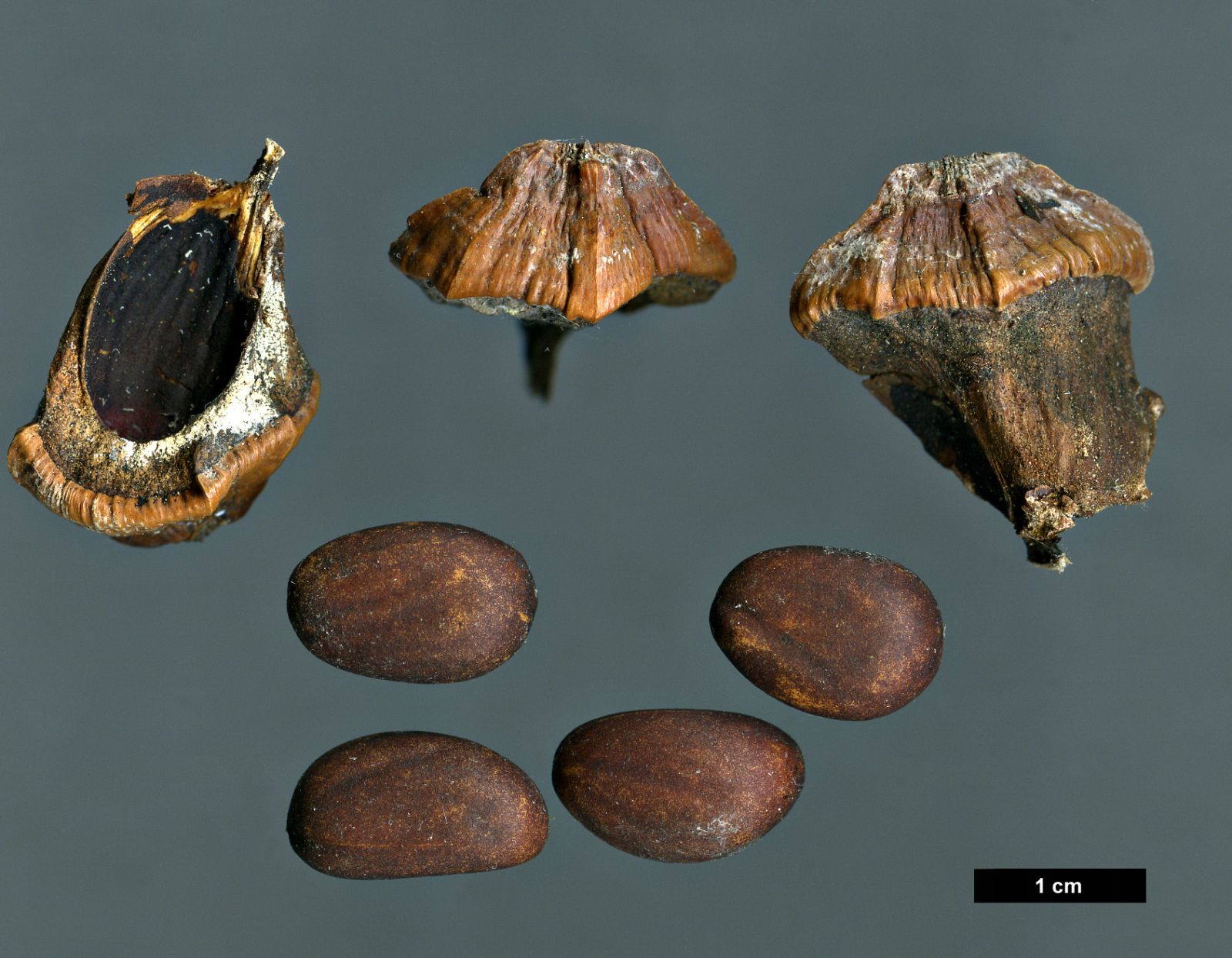Pinus nelsonii
Credits
Article from New Trees by John Grimshaw & Ross Bayton
Recommended citation
'Pinus nelsonii' from the website Trees and Shrubs Online (treesandshrubsonline.
Genus
- Pinus
- Subgen. Strobus, Sect. Nelsonia
Common Names
- Nelson's Pinyon
Other taxa in genus
- Pinus albicaulis
- Pinus arizonica
- Pinus armandii
- Pinus attenuata
- Pinus ayacahuite
- Pinus balfouriana
- Pinus banksiana
- Pinus bhutanica
- Pinus brutia
- Pinus bungeana
- Pinus canariensis
- Pinus cembra
- Pinus cembroides
- Pinus chiapensis
- Pinus contorta
- Pinus coulteri
- Pinus culminicola
- Pinus densata
- Pinus densiflora
- Pinus devoniana
- Pinus durangensis
- Pinus echinata
- Pinus edulis
- Pinus elliottii
- Pinus engelmannii
- Pinus eremitana
- Pinus flexilis
- Pinus gerardiana
- Pinus greggii
- Pinus × hakkodensis
- Pinus halepensis
- Pinus hartwegii
- Pinus heldreichii
- Pinus henryi
- Pinus × holfordiana
- Pinus hwangshanensis
- Pinus jeffreyi
- Pinus johannis
- Pinus koraiensis
- Pinus lambertiana
- Pinus leiophylla
- Pinus longaeva
- Pinus massoniana
- Pinus maximartinezii
- Pinus monophylla
- Pinus montezumae
- Pinus monticola
- Pinus morrisonicola
- Pinus mugo
- Pinus muricata
- Pinus nigra
- Pinus oocarpa
- Pinus orizabensis
- Pinus palustris
- Pinus parviflora
- Pinus patula
- Pinus peuce
- Pinus pinaster
- Pinus pinceana
- Pinus pinea
- Pinus ponderosa
- Pinus pseudostrobus
- Pinus pumila
- Pinus pungens
- Pinus quadrifolia
- Pinus radiata
- Pinus remota
- Pinus resinosa
- Pinus rigida
- Pinus roxburghii
- Pinus sabiniana
- Pinus serotina
- Pinus sibirica
- Pinus strobiformis
- Pinus strobus
- Pinus sylvestris
- Pinus tabuliformis
- Pinus taeda
- Pinus taiwanensis
- Pinus teocote
- Pinus thunbergii
- Pinus torreyana
- Pinus virginiana
- Pinus wallichiana
- Pinus wangii
- Pinus yunnanensis
Editorial Note
The text below is drawn from both New Trees (Grimshaw & Bayton 2009, who discussed this taxon at species rank, as here) and Bean’s Trees and Shrubs (Bean 1976, who also treated P. nelsonii as a good species but discussed it within his article on P. cembroides). We have relocated Bean’s text here as we are reorganising articles within Pinus to enable a partial revision of this important genus to commence in late 2023. See the Editorial Note at the beginning of the genus article for further details.
TC, October 2023.
Tree to 10 m, trunk short, often forked, 0.2–0.3 m dbh. Bark thin, smooth, greyish brown; in older trees fissured, thin, breaking into irregular plates divided by longitudinal and rarely horizontal fissures on lower trunk. Crown broad, dense, rounded. Branchlets long, stout, upcurved, grey; vegetative buds red-brown, inconspicuous, not resinous. Leaves in fascicles of three (to four) but remaining connate unless separated by force, so appearing single, persisting for two to three years, in sparse tufts near ends of branchlets, straight to slightly curved, rigid, bright green, triangular in cross-section, 4–8(–10) × 0.07–0.08 cm, apex acute, margins serrated. Fascicle sheaths to 0.9 cm long, persistent. Cataphylls 0.5–0.8 cm long, early deciduous. Male strobili ovoid-oblong, 0.7–0.9 × 0.3–0.35 cm. Female cones lateral, not on ultimate branches, solitary or rarely in pairs; peduncles stout, curved, 3–6 cm long, 6–9 mm thick (usually stouter than distal shoot), remaining on the branch after the cones fall. Cones 6–12 × 4.5–6 cm, green ripening red, mature in two years; mature cones cylindrical, sometimes irregular. Scales 60–100, opening partially, thick, softly woody but fragile at base; apophysis irregular, rugose red-brown; umbo dorsal, large but ill defined due to continuous growth, grey to reddish with short, stout, blunt spike. Seeds dark red-brown, 12–15 mm; wings vestigial, remaining attached to the cone scales. Perry 1991, Farjon 2005a. Distribution MEXICO: Nuevo León, San Luis Potosí, Tamaulipas. Habitat Slopes in arid and semi-arid mountains, between 1600 and 3200 m asl. USDA Hardiness Zone 9. Conservation status Endangered. Illustration Farjon & Styles 1997, Farjon 2005a; NT610. Cross-references B219, S374, K226.
Pinus nelsonii is a thoroughly weird pine, unique in numerous features. Although discovered in 1904, it may not have been introduced until recently, as the specimen at Kew referred to by Bean (1976b) was later recognised as P. orizabensis (see p. 612). The cones of P. nelsonii are the strangest in the genus, with the conelet, unlike in any other pine, not ceasing growth in the first winter; the umbo is therefore large and grades into the apophysis. The cone is also unusual in that the peduncle occasionally bears needle fascicles, again not seen in any other pine. The needles are unique in remaining connate throughout their lifetime (‘zippered’ together by the marginal teeth) (Bailey & Hawksworth 1988). Pinus nelsonii forms a short, bushy tree, with a crown shaped similarly to that of young P. pinea. The needles are bright green, and young plants bear green (not glaucous) juvenile leaves for up to ten years. It has proved to be the most distinct pine of all genetically, not closely related to any other, and now placed in its own section, Nelsonia (Businský 2008). In the wild it grows in arid situations, often with P. cembroides. Gatherings have been made by a few collectors, including Frankis 183 from Nuevo León in 1991, a tree from which in the Rock Garden at Edinburgh was about 2 m tall and coning in 2006, probably the first cones of this species ever produced in the United Kingdom. It has also been collected by Carl Schoenfeld and John Fairey, from whose material a tree has grown at Berkeley since 1997. Wider cultivation should be attempted, though more for its interest as a botanical curiosity than for its decorative qualities.
Bean’s Trees and Shrubs
A small tree with pale glaucous or whitish shoots. Leaves in threes, usually adhering and apparently single in wild plants, slender, up to 2{1/2} in. long (occasionally longer), three-sided, light green on the outer side; sheaths persistent, about {1/4} in. long, not reduced to a rosette. Cones cylindrical or oblong-ovoid, up to 5 in. long, pendulous from the downward curving of the stout peduncle, which is 1 to 2 in. long; scales relatively few, the exposed part rhomboidal, the transverse diameter much the larger, with wide, prominent umbos; seeds large, wingless, edible (Gard. Chron., Vol. 36 (1904), p. 122, fig. 49).Native of N.E. Mexico. A tree at Kew, planted in 1910, is considered to belong to this species. It measures 32 × 2{1/4} ft (1969).
From the Supplement (Vol. V)
The plant at Kew, mentioned on page 219, is of doubtful identity and may be P. cembroides. It measures 36 × 31⁄4 ft (1984).


